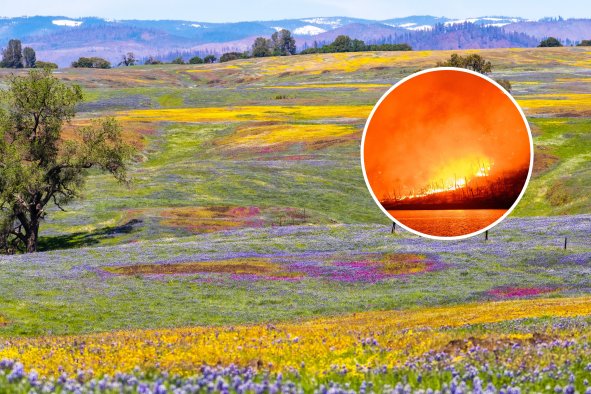Hurricane Beryl, currently making landfall in Mexico, is expected to strengthen once again as it approaches Texas.
The storm reached a Category 5 strength on Monday evening, but it weakened to a Category 3 storm when it hit Jamaica on Wednesday and is currently a Category 2 storm as it plows into the Yucatán Peninsula.
The storm is forecast to continue across the Gulf of Mexico, hitting southern Texas early on Monday morning, and is expected to strengthen again on its journey, slamming into the state as a hurricane-strength storm.
The record-breaking hurricane has killed 9 people on its rampage across the Caribbean, first smashing through Grenada, Venezuela, and St. Vincent and the Grenadines, then slamming into Jamaica. The storm fluctuated from Category 2 after it left Jamaica back up to Category 3 before dropping back to Category 2 as it made landfall in Mexico with wind speeds of 110 miles per hour.
"Beryl is expected to emerge over the southwestern Gulf of Mexico tonight and then move northwestward toward northeastern Mexico and southern Texas by the end of the weekend," the National Hurricane Center said in a public advisory on Friday.
"Maximum sustained winds are near 110 mph with higher gusts. Rapid weakening is expected after Beryl moves inland and crosses the Yucatan Peninsula, but slow re-intensification is expected once Beryl moves back over the Gulf of Mexico."
The storm's intensification is the result of the warm waters of the Gulf of Mexico. When a hurricane moves over an area with warmer sea surface temperatures, it can absorb more heat and moisture, making it stronger.
Hurricanes are classified according to the Saffir-Simpson Hurricane Wind Scale, which is based on their sustained wind speeds. Category 1 hurricanes feature wind speeds ranging from 74-95 mph, Category 2 hurricanes range from 96-110 mph, Category 3 hurricanes span 111-129 mph, Category 4 hurricanes have winds between 130-156 mph, and Category 5 hurricanes have wind speeds of 157 mph or more.
Forecasters are unsure how strong the storm will be when it reaches Texas, but it is anticipated to be at least Category 1.
Beryl is now the earliest Category 5 storm ever recorded in the Atlantic, surpassing the previous record set by Category 5 Hurricane Emily on July 16, 2005. The Atlantic hurricane season spans from early June to late November, but severe storms are rare in June and July.
According to NOAA data, only 6 percent of all tropical storms and just 2 percent of hurricanes between 1851 and 2022 occurred in June. Beryl, having reached Category 4 status before July, is the first storm of this intensity recorded in June and is now recognized as the strongest July storm on record.
In anticipation of Beryl's arrival in Texas, Cameron County Judge Eddie Trevino Jr. issued a voluntary evacuation notice for people living in RVs at several county parks.
"At this time, we are not requiring guests to evacuate, but want to make sure all precautionary measures are taken in case the storms current track remains accurate," the notice said, advising campers to secure loose items, retract awnings and conserve perishable food.
The Yucatán Peninsula is expected to be battered by the hurricane, with as much as 6 feet of storm surge and a maximum of 10 inches of rainfall in certain locations, possibly leading to flash floods.
"Hurricane-force winds, dangerous storm surge, and heavy rainfall are beginning to occur across the Yucatan Peninsula within the hurricane warning area. Residents there should shelter in place through the passage of these life-threatening conditions today," the NHC said in a key message.
"There is an increasing risk of strong winds, storm surge, and heavy rainfall in portions of northeastern Mexico and southern Texas late this weekend," they said. "Rip currents could cause life-threatening beach conditions beginning late today and continuing through the weekend across much of the Gulf coast."
Do you have a tip on a science story that Newsweek should be covering? Do you have a question about hurricanes? Let us know via science@newsweek.com.
Disclaimer: The copyright of this article belongs to the original author. Reposting this article is solely for the purpose of information dissemination and does not constitute any investment advice. If there is any infringement, please contact us immediately. We will make corrections or deletions as necessary. Thank you.




